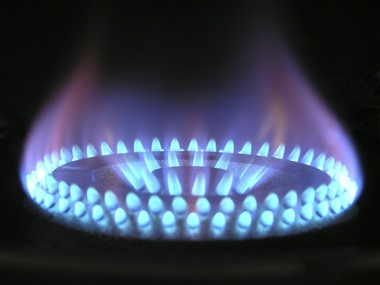Can we help you?
Contact us

Can we help you?
Contact us

Thank you for contacting us
Your form has been submitted successfully Our team will contact you again as soon as possible.
Whooppss...!! An error has occurred
Try sending later or write an email directly to areaempresas@ua.es

INFO
SHEET
DOWNLOAD
EXECUTIVE
ABSTRACT
CONTACT DETAILS: Research Results Transfer Office-OTRI
University of Alicante
Tel.: +34 96 590 99 59
Email: areaempresas@ua.es
http://innoua.ua.es
Methane is a fuel much cleaner than coal or petroleum derivates. However it has a transport problem since it is very difficult to liquate. The Department of Inorganic Chemistry of the University of Alicante has developed technology and process to storage methane in activated carbons with high adsorption capacity. For this purpose, very microporous materials are prepared reaching a high uptake in methane adsorption, a high reversibility, and a high packing density.

Natural gas adsorbed on microporous carbons at 4 MPa and 298 K is a promising alternative to compressed natural gas (20 Mpa and 298 K) as a clean vehicular fuel for bulk transportation. For this purpose, a suitable development of the adsorbent is necessary to maximise methane uptake per storage volume. Among the available adsorbents, activated carbons exhibit the largest adsorptive capacity. The larger their surface area, the higher is their methane uptake.
However, because methane storage (at room temperature and pressures up to 4 MPa) is exclusively restricted to the micropore volume, activated carbons with meso and macropore volumes have to be avoided. Thus, the properties of an activated carbon adequate for methane storage can be summarised as:
• A high adsorption capacity
• A high packing density
• High adsorption/desorption rates
• A ratio between the amount desorbed at 0.1 MPa and the amount adsorbed at 4 MPa, as close as possible to one.
For several years, the Department of Inorganic Chemistry of the University of Alicante has studied the development and applications of activated carbon fibres derived from petroleum or coal tar pitch and the preparation of activated carbons from different precursors. The Department has the expertise on the preparation of carbon fibres, activation, characterisation and development of applications of activated carbon fibres and activated carbons. It has also analysed the methane adsorption process in activated carbons (AC) and activated carbon fibres (ACF), obtained by CO2 or steam activation and by chemical activation, and the packing densities of these materials.
Concerning the preparation of activated carbons, selected precursors materials and processing techniques, including monolithic forms of activated carbons, have also being investigated to improve the volumetric adsorptive capacity for methane storage.
Activated carbon fibres (ACF) have been very little applied to methane storage in spite of being promising materials for this purpose. In fact, the characterisation that can, at a first glance, make these materials interesting is their porous texture. ACF can be essentially microporous materials with low mesoporosity and absence of macroporosity if they are properly prepared. This would lead to a high packing density and an important volumetric capacity for methane storage.
Due to the essentially microporous character of the activated carbon fibres, these materials are more suitable for methane storage than super-activated carbon for two reasons:
• The first one is that they mainly contain microporosity, that is the only range of porosity useful for methane storage.
• The second reason is the large packing density that can be reached (of about 0.7 g/ml for a sample activated up to 73 % burn-off which has a BET surface area close to 2400 m2/g).
Additionally, highly microporous activated carbons have been prepared, in powder or monolithic shape, by chemical activation of anthracites. The resulting activated carbons have a very homogeneous microporosity and BET surface areas above 3000 m2/g.
The microporous materials developed have been tested for methane storage. Samples with methane storage capacities close 163 V/V and deliveries near to 143 V/V have been developed. This delivery corresponds to an energy density of 0.18 compared with gasoline. This delivery of 143 V/V is appropriate for a commercial application of the activated carbon.
This technology is able to prepare adsorbent materials with high packing density and methane delivery
Material preparation technology is available for demonstration.
Natural gas adsorbed on microporous carbons is a promising alternative to compressed natural gas as a clean vehicular fuel for bulk transportation and storage.
The partners sought are industries with interest in this technology. The Department of Inorganic Chemistry is interested in transferring its knowledge and know-how of preparation of high density and high surface area activated carbon fibres useful for methane storage.
University of Alicante - Carbon and Environmental Group
History
The University of Alicante was created in 1979 and has rapidly established itself in Spain as a prestigious university, particularly in the teaching and research of science. The Carbon and Environmental Group involved in this research, belongs to the Department of Inorganic Chemistry in the Faculty of Sciences.
Personnel
The group was established in 1983 when Prof. Ángel Linares-Solano joined the University of Alicante. Currently, it comprises five other membres of the Faculty, Prof. Concepción Salinas-Martínez de Lecea, Prof. Diego Cazorla-Amorós, Prof. M.J. Illán-Gómez, Prof. M.C. Román-Martínez and Prof. J. Alcañiz-Monge, five Assistant Professors and about 10-15 PhD students.
Research fields
The main research fields of the group are: activated carbon preparation and characterisation, carbon fibre preparation, gas adsorption, gas-solid reactions, heterogeneous catalysis, pollution abatement, gas separation and gas storage.
Experience
The experience of the group in research since 1990 can be summarised as follows: 166 publications in journals and 211communications in conferences and presentation of 5 patents. Participation in 69 projects (with financial support from the Spanish government, EC and private industries) and responsible for 12 Ph. D. Thesis and 7 Master Thesis. Regarding the EC funding, our group has participated in 6 projects (6 ECSC, 1 BRITE), being the co-ordinator of three of them.
Materials and Nanotechnology
Carretera San Vicente del Raspeig s/n - 03690 San Vicente del Raspeig - Alicante
Tel.: (+34) 965 90 9959




